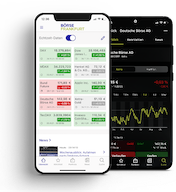Marktstimmung: “Bulls with concerns”

In recent days, the DAX has finally broken out of its trading range, accompanied by excessive optimism among professionals. Goldberg knows whether this could be a burden for further price gains.
Summary
Despite unchanged news, German blue chips have broken out of the trading range of recent weeks. Local, medium-term investors are among them. But that's not all, because Joachim Goldberg suspects that foreign capital is also participating in the profits. 14 percent of professionals have closed their short positions. The behavioral economist concludes from the fact that only 4 percent have gone long that the majority on the bullish side are not comfortable.
All in all, Goldberg does not see the sentiment index of professionals at +30 points as a real burden. On the upside, he does not expect profit-taking to put a strong brake on the market, as there are not that many on the long side. However, protection on the downside has also become more fragile. This new, weaker support now stands at 23,850/900 points.
8 October, 2025. FRANKFURT (Goldberg & Goldberg). When we titled our sentiment commentary last week “Urge to rise,” we honestly had no idea that the pressure in the boiler was so great that the important resistance level of 23,800/850 DAX points would be sustainably exceeded on the same day. There was also a lack of strong fundamental triggers that would have justified such a significant weekly gain, which at times amounted to 3 percent, at first glance. And so there is reason to believe that long-term demand from abroad may also have contributed to this sudden price increase. After all, the positioning of local medium-term players alone would probably not have been able to trigger a squeeze of this magnitude at that point in time. As a result, there has still been a gain of 2.6 percent since our last sentiment survey, due to the lack of any major setbacks.
The significant rise in the DAX has also had a positive impact on the sentiment of the institutional investors with a medium-term trading horizon that we surveyed. Our Frankfurt Stock Exchange Sentiment Index has risen by 18 points to +30 compared to two weeks ago (no survey was conducted last week). Incidentally, this is the highest index level since the beginning of November 2023.
Relatively modest appetite for buying
Above all, former bears have been active, apparently closing out their positions in response to the sudden rise in prices – a disciplined move, at least. This is supported by the shift of former pessimists to neutral investors, whose camp has grown by 10 percentage points. Only just under 30 percent of former bears have ventured over to the bulls' side on balance, turning their positions around 180°.
The mood among private investors has also improved somewhat compared to the previous week – the Frankfurt Stock Exchange Sentiment Index in this panel has now risen for the fifth time in a row, increasing by 7 points to a new level of +23. While those investors we survey via social media are almost naturally more bullish than in the previous week, there has also been a significant shift toward optimism among other private investors, whose group has grown by 8 percentage points. Incidentally, three-quarters of this increase can be attributed to previously neutral players, while there appears to have been little collateral damage among the former bears.
Fear of missing out
Today's survey shows that institutional investors have overtaken their private counterparts in terms of optimism. However, the structure of the shift among institutional investors is quite different. In many cases, it was quickly realized that the upper limit of the DAX range, which had been in place since the beginning of September, would probably no longer hold. At the same time, one gets the impression that the increase in the bull camp is relatively modest. In other words, even if many investors are mentally unable to switch their positions from short to long in one fell swoop when losses occur, the increase in bulls (4 percentage points within two weeks) does not exactly suggest that the majority of investors actually feel comfortable with these new commitments. Rather, the fear of missing out is likely to have played a decisive role in this repositioning.
For regular readers of our sentiment commentary, an index level of +30 should actually set off alarm bells. Especially since optimism is even slightly higher when viewed in relative terms over three and six months. However, at 51 percent, the bull camp is not yet so densely populated that there is any need to fear massive profit-taking on the upside. However, the downside is much less protected than before, as the remaining pessimists would have little to counter a major setback. This is especially true if the downside, at an estimated 23,850/900 points, attracts too little demand from neutral investors.
by Joachim Goldberg
8. October 2025, © Goldberg & Goldberg für boerse-frankfurt.de
Sentiment index of institutional investors

| Bullish | Bearish | Neutral | |
|---|---|---|---|
| Total | 51% | 21% | 28% |
| vs. last survey | +4% | -14% | +10% |
DAX (change since last survey): 24.430 (+630 points since last survey)
Frankfurt Stock Exchange Sentiment Index for institutional investors: 30 points (18 points since last survey)
Sentiment index of private investors

| Bullish | Bearish | Neutral | |
|---|---|---|---|
| Total | 53% | 30% | 17% |
| vs. last survey | 5% | -2% | -3% |
DAX (change since last survey): 24.430 Punkte (+130 points since last survey)
Frankfurt Stock Exchange Sentiment Index for private investors: 23 Punkte (+10 points since last survey)
About the Börse Frankfurt Sentiment-Index
The Frankfurt Stock Exchange Sentiment Index ranges between -100 (total pessimism) and +100 (total optimism), with the transition from positive to negative values marking the neutral line.
More articles from this columnist
| Time | Title |
|---|




